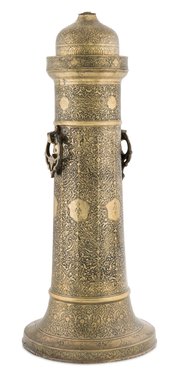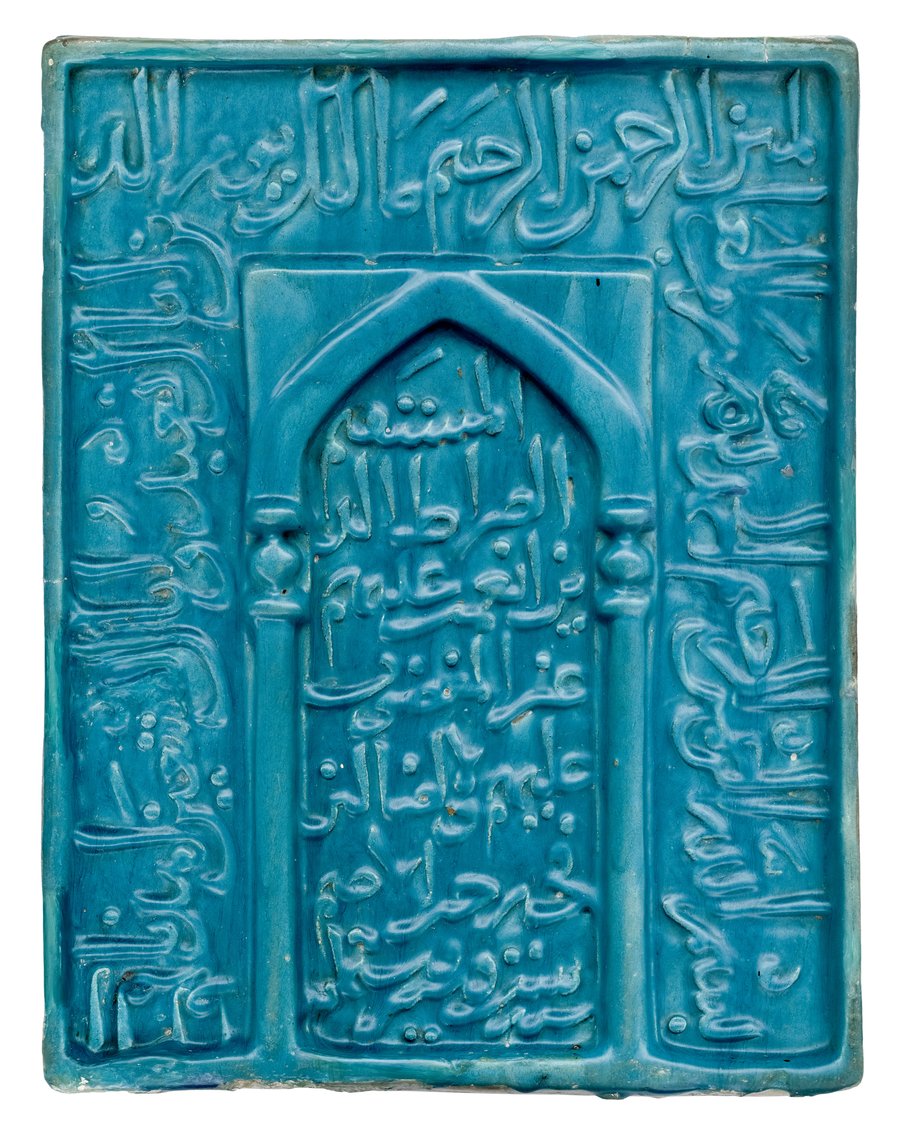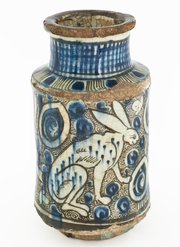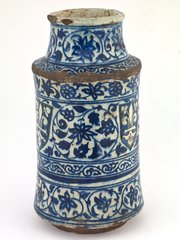
Mihrab Tile
Museum of Islamic Art
- Title:
- Mihrab Tile
- Production place:
- Kashan
- Period:
- Ilkhanid
- Title:
- Mihrab Tile
- Production place:
- Kashan
- Period:
- Ilkhanid
- Material:
- Fritware, Glaze
- Technique:
- Moulding, Glazing
- Dimensions:
- 41 × 32 × 4.5
This small, moulded tile in bright and thick turquoise glaze represents a mihrab, the niche indicating the qibla, the sacred direction to Mecca towards which prayers are performed. Originally, it might have decorated a small prayer room or a larger tilework composition maybe for a funerary complex. The niche is surrounded by an inscription, the complete text (seven verses) of Sura al-Fatiha, the first sura of the Qur'an and a quite apt passage for such a religious object, in which the mihrab has been represented as an arched door frame.
Tilework from Kashan was often employed during the pre-Mongol and the Ilkhanid periods for the decoration of large portions of external walls and interiors of both religious and secular architecture, including royal palaces. Turquoise glaze was in particular adopted during the domination of the Great Seljuqs for both architectural tilework and figurative ceramics from Iran.



